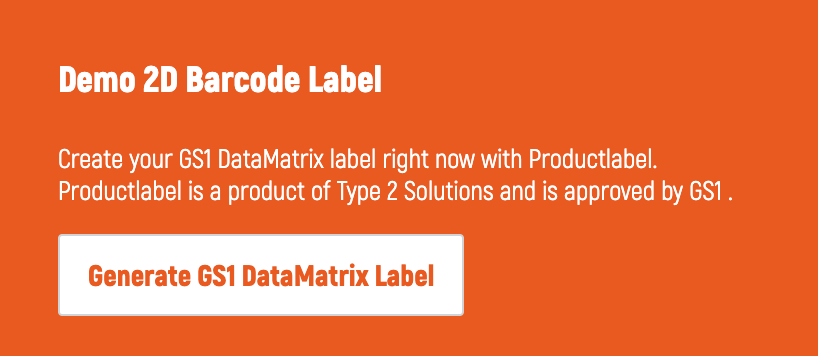2D code Data Matrix
A Data Matrix is a two-dimensional code. A great advantage of the Data Matrix is that it can contain more information than a regular barcode, for instance the net weight of a product or its retail price. More and more retailers and brand owners support transitioning from the universal product code (UPC) or the EAN 13 code to a data-rich, two-dimensional (2D) barcode, such as the GS1 Data Matrix.
History of the barcode in Retail
The barcode was introduced in the United States and, until recently, was called the Universal Product Code (UPC). The first product to have a UPC barcode was Wrigley’s Gum, which was first scanned on June 26, 1974 in a supermarket in Troy, Ohio.
From the United States to the Netherlands
 Albert Heijn brought the American barcode scanning system to the Netherlands, which led to the first barcode being scanned in the Netherlands in January 1977. This happened in a supermarket in Heemskerk.
Albert Heijn brought the American barcode scanning system to the Netherlands, which led to the first barcode being scanned in the Netherlands in January 1977. This happened in a supermarket in Heemskerk.
1D barcode on food
The 1D barcode on food is used for efficient stock management and for making sure queues at cash registers are kept short. The most popular 1D barcode is the EAN 13 barcode, which is a more elaborate version of the UPC code. The EAN 13 barcode is the present standard for labelling of supermarket products in Europe.
EAN 13 barcode and the DataBar
In addition to the EAN 13 barcode, the GS1 DataBar is also often used in retail. A great advantage of the DataBar is that it can contain more information than a regular barcode, for instance the net weight of a product or its retail price. In case even more information is needed in the barcode, the Data Matrix is an excellent solution. At present, the Data Matrix is predominantly used in Healthcare.
Data Matrix in Retail
In 2017, GS1 Belgium & Luxembourg started testing whether the GS1 Data Matrix is an appropriate barcode in retail. This should eventually lead to the Data Matrix replacing the EAN 13 barcode and the GS1 DataBar. Carrefour, Makro and Colruyt are a part of this pilot project.
Advantage of the Data Matrix
 The GS1 Data Matrix can combine data of 3116 numeric and 2335 alphanumeric characters, which makes the Data Matrix particularly suitable for incorporating a lot of information in one barcode.
The GS1 Data Matrix can combine data of 3116 numeric and 2335 alphanumeric characters, which makes the Data Matrix particularly suitable for incorporating a lot of information in one barcode.
Advantage for Retail
In addition to the Global Trade Item Number (GTIN), or GS1 product code, the GS1 Data Matrix can contain other GS1 identification keys and attributes. Examples of these are a batch or lot number, or a best before date. It allows supermarkets to optimize stock management, so their customers never miss out on products and there is no loss of income.
Advantage for the consumer
Using a GS1 Data Matrix in retail is very advantageous for consumers, as it allows them to easily look up information about products on their smartphone. Take, for example, the retail price, the gross or net weight, the best before date, or possible allergens. This offers limitless possibilities for manufacturers or retailers to communicate with consumers.
2D Barcodes are the future
The more information you can make digitally available on the packaging, the more usable the barcode is for everyone. Digitizing information offers advantages in terms of traceability, food safety, inventory management and food waste.
Advantage of Productlabel
 Whether you choose a 1D or 2D barcode, our Productlabel software makes it easy for you to quickly generate a barcode or data matrix in accordance with the GS1 standard and possible additional barcode requirements of your client.
Whether you choose a 1D or 2D barcode, our Productlabel software makes it easy for you to quickly generate a barcode or data matrix in accordance with the GS1 standard and possible additional barcode requirements of your client.
By suppling your products with a barcode, you create logistic traceability and can easily supply your customers with the desired information.